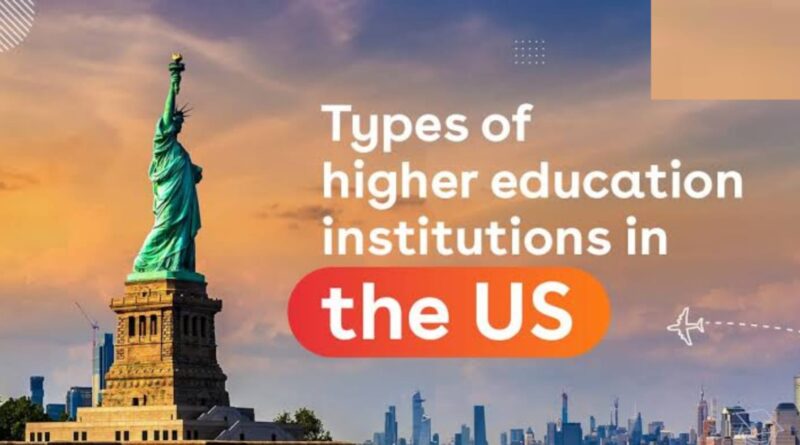Types and details of higher education institutions in the US…
In the United States, higher education institutions encompass a wide variety of colleges, universities, and specialized schools offering diverse academic programs and degrees. Here are the main types of higher education institutions in the US along with details about each:
Public Universities: Public universities are funded by state governments and typically offer a broad range of undergraduate, graduate, and professional programs. They often have large student populations and diverse faculty. Examples include the University of California system, University of Michigan, and University of Texas system.
Private Universities: Private universities are funded through tuition, endowments, and donations. They may offer smaller class sizes, specialized programs, and extensive resources. Examples include Harvard University, Stanford University, and Massachusetts Institute of Technology (MIT).
Community Colleges: Community colleges provide two-year associate degree programs, certificate programs, and workforce training. They are often more affordable than four-year institutions and serve as a pathway to higher education for many students. Examples include Miami Dade College, Houston Community College, and City College of San Francisco.
Liberal Arts Colleges: Liberal arts colleges offer undergraduate programs that emphasize a broad-based education in the humanities, social sciences, and natural sciences. They often have smaller class sizes, close student-faculty interaction, and a focus on critical thinking and communication skills. Examples include Williams College, Amherst College, and Swarthmore College.
Historically Black Colleges and Universities (HBCUs): HBCUs were established primarily to serve African American students. They offer a range of undergraduate and graduate programs and provide a supportive environment for minority students. Examples include Howard University, Spelman College, and Morehouse College.
Religiously Affiliated Institutions: These institutions are affiliated with a specific religious denomination and may integrate religious teachings into their curriculum. They offer a variety of academic programs at the undergraduate and graduate levels. Examples include Notre Dame University, Brigham Young University, and Yeshiva University.
Technical and Vocational Schools: Technical and vocational schools offer specialized training in fields such as healthcare, technology, automotive repair, and culinary arts. They provide hands-on learning experiences and may lead to industry certifications or licensure. Examples include DeVry University, Culinary Institute of America, and Lincoln Technical Institute.
For-Profit Colleges: For-profit colleges are operated by private companies and focus on providing career-oriented education and training. They often offer flexible scheduling options and online programs. Examples include University of Phoenix, DeVry University, and Kaplan University.
Art and Design Schools: These institutions specialize in art, design, and creative disciplines such as fine arts, graphic design, fashion design, and animation. They offer undergraduate and graduate programs and often have state-of-the-art facilities and studios. Examples include Rhode Island School of Design (RISD), Savannah College of Art and Design (SCAD), and Pratt Institute.
Specialized and Professional Schools: Specialized schools focus on specific fields or disciplines, such as law, business, medicine, engineering, and architecture. They offer professional degrees and advanced training tailored to specific career paths. Examples include Harvard Law School, Wharton School of Business, and Johns Hopkins School of Medicine.
These are just some of the main types of higher education institutions in the US, each offering unique academic programs, resources, and learning experiences to students.



